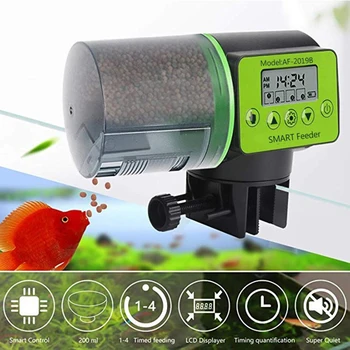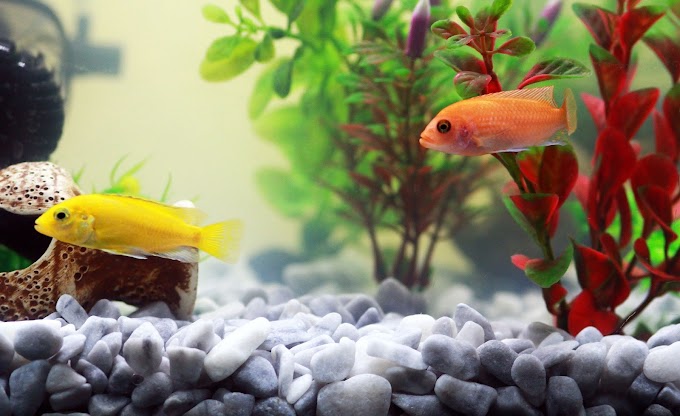 |
| Image by stevevaudry from Pixabay |
The subsequent article will hopefully provide you with the required information to work out if freshwater crabs are right for you.
As a general rule,
freshwater crabs are easy to take care of. And with proper care, they will live
several years. These little fellows average 1-4 inches in size, although there
are larger types.
All freshwater crabs like to climb, hide, and
explore, so you'll got to provide them with a correct aquarium that gives them
with many opportunities.
Let’s take a glance at some general information.
PHYSICAL APPEARANCE:
There are many sorts of freshwater crabs so their appearance will naturally vary. They are available in many colors and patterns, from the vivid purple of the tiny but beautiful Vampire Crab to the more aggressive but beautiful Panther Crab with its leopard-like pattern.
The small crab is recognized by its one very distinctive large claw.
WHAT CRABS EAT?
This important
topic revolves around their omnivorous nature. They’re going to eat smaller
crustaceans and fish, insects, and larvae, also as plant matter. Some also will
nosh on some algae, as well.
They do best with
freeze-dried foods, frozen foods, and low-grain or no-grain pellets and flakes also.
The freshwater crabs for aquarium will eat blanched peas, blanched zucchini,
and algae wafers, as well.
Be sure to offer them a solid balance of those sorts of food for his or her optimal health. Just remember to offer them food which will sink to rock bottom of the tank – or the opposite critters in there'll beat them thereto. Also, thaw out any frozen foods before feeding that to them.
 |
| Image by Elijah Lovkoff from Pixabay |
Basic water conditions, tank size:
Fresh water crabs
aquarium requirements generally got to be a minimum of 5 gallons in size, with
water somewhere between 72 and 82 degrees Fahrenheit. It’s also important to
supply most of them rocks that are outside the water. Most crabs aren't fully aquatic
– though you’ll see some exceptions that are – in order that non-watery surface
is important.
Freshwater crabs
also need many décor. They’re climbers and hiders naturally, which suggests
they have rocks, plants, caves, sunken ships, treated seashells and treated
driftwood, and other objects that they will climb across and conceal among.
Typical Behavior:
Freshwater crabs
are nocturnal creatures. They’re highly active scavengers. Although they're
primarily omnivorous, some representatives of the species could also be
considered predators. Freshwater crabs like to explore, and that they spend
much of their time hiding and climbing.

they need a reputation for being excellent escape artists. Freshwater crabs will often cash in of the tiniest hole which may present a chance for them to flee. So confirm that your aquarium is escape-proof! Many homeowners can recount with amusement the funny moments they need caught their crabs trying to flee from their aquarium.
Also, all crabs
molt, so if you notice your crab is lying on his back, he could also be
molting. Keep an in depth eye on him if he’s like this to verify that’s what’s happening.
Many freshwater
crabs also enjoy a touch freshwater salt, as well, so grab some from your pet
store..
As to daily care, keep this stuff in mind.
Daily check their
filter, water temperature, and verify equipment is running properly.
Weekly check the
water quality.
Monthly change 10
to 25 you look after the entire water volume every 2 to 4 weeks.
Slowly introduce
new inhabitants, décor, and plants to the aquarium, instead of all directly. Quarantine
any new animals or fish before introduction to scale back potential disease
outbreaks.
 |
| Image by Jeremy Wilder from Pixabay |
Some popular freshwater crabs include the following:
Vampire Crab:
The Vampire Crab is small, averaging 2 inches. They’re best known for his or her vivid purple color which can bring an excellent touch of color to any aquarium. Like vampires, they're nocturnal. Compared with other freshwater crabs they're more aggressive. Take care when housing them with other crabs. They even have a reputation for snacking on crickets. Vampire crabs may prey on smaller fish and should themselves successively be preyed upon by bigger fish.
Red Claw Crab:
one among the smaller freshwater crabs,
they're sometimes called micro crabs. These tiny crabs have a bent to
dehydrate. They need distinctive and vivid red claws. Additionally, they're
fairly territorial and may be aggressive with other crabs. They typically had best
in brackish water.
Panther Crab: These crabs are unique therein they're
fully aquatic. Also referred to as leopard crabs, they're known for his or her
beautiful panther-like pattern. They’re reported by some owners to be more
aggressive and territorial than other types. They need been known to readily
attack other crabs. With proper care, they will have a lifespan of 2-3 years in
captivity.
Gold Claw Crab: The golden claw crab is taken into
account a kind of crab. They’re most recognizable for his or her distinctive
large yellow/gold claw. They need a reputation for destroying plants.
Rainbow Land Crab: At 6-8 inches, this is often a
really large freshwater crab. They display striking coloring, with a deep
blue/purple body and orange legs. Thanks to their size and tendency to scavenge
they're going to definitely need a bigger tank. While they are doing alright in
brackish water which closely mimics their natural habitat, they are doing well
in plain freshwater.
Thai Micro Crab: does one have limited space in your apartment? Why not accompany the small Thai Micro Crab? With a body width of only 0.4 inches, this is often the right crab for those living in tight quarters! With a camouflage body that's easily hidden, you'll own this crab albeit you've got little or no room in your apartment.
Patriot Crab: this is often a really bright colorful
specimen hailing from Coastal West Africa. It’s fairly large and that they are
considered highly territorial. Averaging 6-8 inches, they're one among the
larger freshwater crabs. Naturally, they're going to require a bigger tank that
gives an aquatic and terrestrial environment. Adult crabs are known to kill
other crabs.
Freshwater Hermit Crab: Ironically, they
don’t require an aquatic environment. Several bowls of water should be
sufficient, provided it allows them to securely submerge but to go away the
water once they want to. They typically had best in pairs and need tons of
sand.
Matano Crab: This fully aquatic freshwater crab from
Lake Matano in Indonesia features a beautiful purple color. It’s fairly large averaging
3-5 inches. They require a better temperature than other freshwater crabs,
including an increased PH level.
Thai Devil Crab: this is often a really colorful
active little crab with a non-aggressive disposition. They’re going to require
some dry areas. Try using plants in their habitat since they often use plants
for eating and hiding.
 |
| Image by Edward Kirkby from Pixabay |








0 Comments